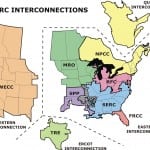Pressures on competitive power markets have fueled substantial declines in plant valuations over the past five years, with coal plants taking the brunt of the damage. That’s the conclusion of a new report from financial services firm Fitch Ratings released on Wednesday.
The report, which calculated the net present value of plants across the country using plant-specific cash flow projections, found that softening demand, falling gas prices, and a challenging regulatory environment have led to a supply glut in some markets, while dramatic changes in the coal-gas spread have undermined the economics of once-profitable plants. The trends, however, were far from uniform, both across regions and between fuel types.
Not surprisingly—if one is to judge from the cavalcade of retirements over the past several years—the bulk of the carnage was in coal. Fitch’s analysis found that the coal plants it studied suffered a breathtaking 55% median decline in value. The worst declines were in the Midwest, where declines were 60% to 65% over the past five years. Surplus reserve margins, shrinking dark spreads, and tightening regulations are believed to be responsible for the fall in value. Coal plants in the ERCOT region suffered the least damage, with an average 25% decline. This is likely because of the tight reserve margins in the region, as well as access to less-expensive coal.
Nuclear was also hammered, with an average decline of around 25%. Plants in the New York and New England region saw the largest drop in value, around 35% to 40%, while plants in Texas and the Southeast were less affected. Most of the decline was driven by differences in capacity price expectations.
Gas-fired plants, both combined cycle and combustion turbine, saw comparatively smaller declines, 17% and 14%, respectively. Spark spreads have narrowed in most regions despite the fall in gas prices. However, there was a wide disparity in plant valuations in gas, with some plants—the newest and most flexible, in areas where substantial renewable generation places a premium on flexibility—actually increasing in value.
The smallest drop was in renewables, where hydropower assets saw a negligible 1% drop, and wind assets fell only 5% (the geothermal plants analyzed by the report fell 47%, but this represented only a handful of assets).
The report suggests that the decline in power plant valuations is reflective of a persistent weakness in the power price environment, and consequently lower expectations of future cash flows. Because of these challenges, both profitability and cash flow for merchant generators have steadily declined over the last five years.
Fitch, which also rates creditworthiness, has downgraded a number of generating companies over this period—again, with the bulk of the damage hitting coal-heavy Midwestern firms. The companies that have seen their rating rise over this period—such as Calpine and NRG—have benefited from highly diversified and renewable-focused portfolios.
Source: Fitch Ratings
—Thomas W. Overton, JD, gas technology editor (@thomas_overton, @POWERmagazine)










